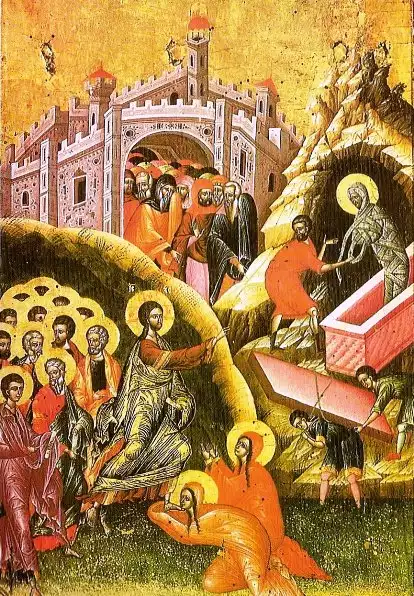
Jesus of Nazareth performed many miracles during his time on earth, but perhaps none was more spectacular than raising his friend Lazarus from the dead. This incredible event is recorded in the Gospel of John and gave clear evidence of Jesus’ power over death itself.
Lazarus Falls Ill
Lazarus lived in the village of Bethany near Jerusalem with his two sisters, Mary and Martha. They were close friends of Jesus and he would often stay at their home when visiting Jerusalem. One day, Lazarus became severely ill. His sisters urgently sent word to Jesus, saying “Lord, the one you love is sick.” However, instead of rushing to Lazarus’ bedside, Jesus chose to remain where he was for two more days before announcing it was time to return to Judea. The disciples warned Jesus that the religious leaders there wanted to stone him, but Jesus was determined to go. When Jesus finally arrived in Bethany, Lazarus had been dead and buried for four days.
Lazarus Raised from the Dead
When Martha heard Jesus had come, she went out to meet him and said “Lord, if you had been here, my brother would not have died.” Jesus told her Lazarus would rise again, but she thought he meant at the resurrection on the last day. Then Mary came, fell weeping at Jesus’ feet and also said “Lord, if you had been here, my brother would not have died.” Jesus was deeply moved and asked to be taken to Lazarus’ tomb, a cave sealed with a stone.
As they walked, the sisters’ friends who had come to comfort them saw Jesus weeping too. When they reached the tomb, Jesus had the stone rolled away from the entrance despite Martha’s concerns about the smell after four days. Then Jesus looked up and prayed to God the Father, thanking him for hearing his prayer. In a loud voice, Jesus called out “Lazarus, come forth!” Suddenly, Lazarus emerged from the tomb still wrapped in his grave clothes, miraculously resurrected by Jesus’ word.
Jesus told Lazarus’ family and friends to unbind him and let him go. Many who witnessed this incredible sign then believed in Jesus, but others went and reported the event to the religious authorities, who began plotting to kill Jesus. However, they did not lay a hand on Lazarus, as many people were puting their faith in Jesus because of this astonishing miracle.
The Significance of the Miracle
The raising of Lazarus stands out as one of Jesus’ most dramatic miracles. It was an undeniable display of his authority over death and decay. In bringing his friend back to life just by calling his name, Jesus demonstrated his divine power in an unforgettable way. This astonishing sign was a decisive moment that increased faith in him for many, while hardening opposition from the religious leaders.
The Gospel writer John states that he recorded signs like this “that you may believe Jesus is the Christ, the Son of God, and by believing you may have life in his name.” This miracle gave clear evidence that Jesus truly was who he claimed to be, the Son of God with power to give eternal life. It points forward to Jesus’ own conquest of death when he rose victorious over the grave on the third day after his crucifixion.
This story reveals Jesus’ compassionate humanity in his weeping with Mary and Martha. It also shows his divine authority and the certainty of the hope he came to bring – that death is not the end for those who put their trust in him. The raising of Lazarus stands as a powerful demonstration of Jesus’ identity as the resurrection and the life.
The miracle of Lazarus being raised from the dead after four days in the tomb is one of the most astounding signs Jesus performed, proving his power over death and decay. This astonishing event produced faith in many, but also hardened opposition that led to plots against Jesus’ life. Nevertheless, it stands today as clear evidence of Jesus’ identity and mission to give eternal life to all who believe in him.
Feast Day: December 17
Patron Saint: of the Poor, Order of Saint Lazarus
References
Köstenberger, A. J. (2004). John. Baker Academic.
Bauckham, R. (2015). Gospel of Glory: Major Themes in Johannine Theology. Baker Academic.
Burge, G. M. (2000). John: The NIV Application Commentary. Zondervan.
Klink, E. W. (2016). John. Zondervan.
